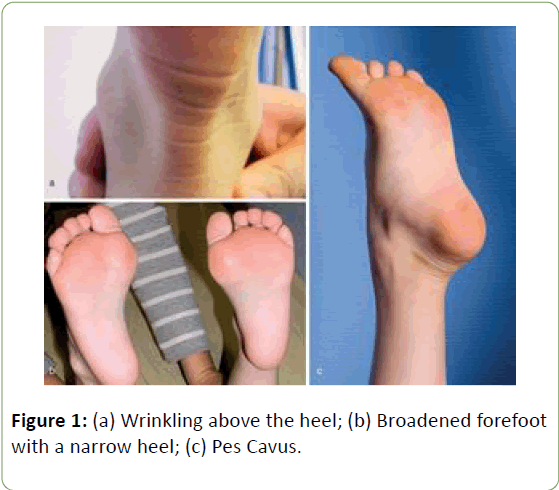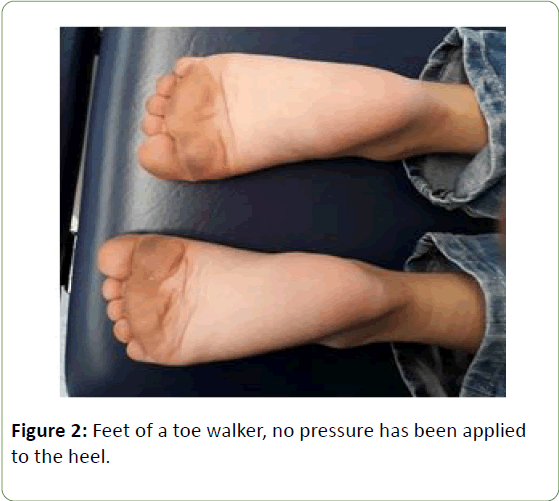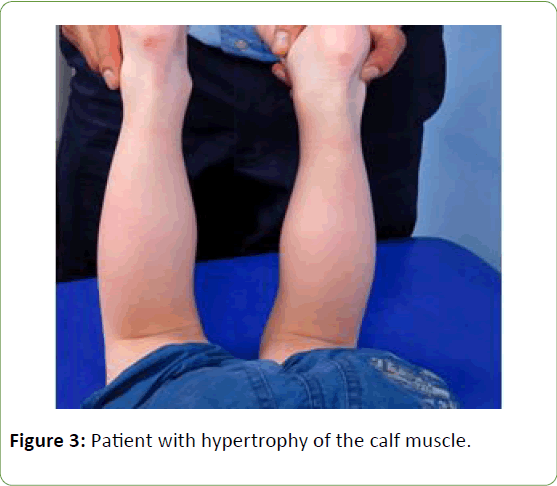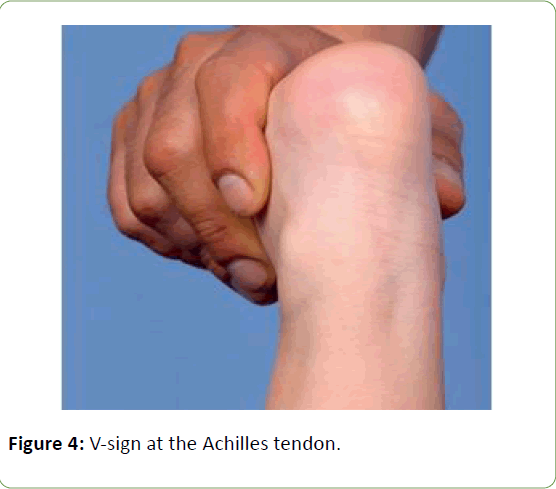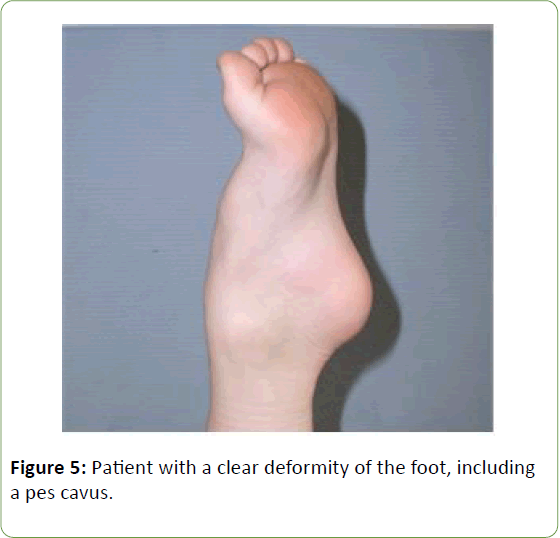The Genetic Causes of Toe Walking in Children
1Rahlstedter Bahnhof Street, Hamburg, Germany
2Diakovere Annastift, Anna-von Borries-Street, Germany
- *Corresponding Author:
- David Pomarino
Rahlstedter Bahnhof street
Hamburg, Germany
Tel: 494089955380
E-mail: info@ptz-pomarino.de
Received date: November 01, 2018; Accepted date: November 21, 2018; Published date: November 28, 2018
Citation: Pomarino D, Thren A, Morigeau S, Thren J (2018) The Genetic Causes of Toe Walking in Children. Genet Mol Biol Res Vol No: 2 Iss No: 2:9
Copyright: © 2018 Pomarino D, et al. This is an open-access article distributed under the terms of the Creative Commons Attribution License, which permits unrestricted use, distribution, and reproduction in any medium, provided the original author and source are credited.
Abstract
This article describes how, methodologically, the genes which can be linked to idiopathic toe walking have been identified. Additionally, the article gives an overview of the relevant genes which have been identified and classifies them according to the Types of Toe Walking scheme by Pomarino. It explains, why this new research gives reason to the claim that idiopathic toe walking does not in fact exist.
Keywords:
Idiopathic Toe Walking, Genetics; Genes AIFM1; EGR2; PMP22
Introduction
The research presented in this article can for the first time identify the medical causes of Idiopathic Toe Walking (ITW). The term Toe Walking (TW) describes a gait anomaly, which causes patients to walk on their forefoot, rather than applying pressure to the entire sole of the foot. The roll over motion which is present in normal subjects cannot always be found in toe walkers. The causes for this can be of a neurological or Orthopaedic nature. Therefore, the patient will be examined for any neurological or Orthopaedic problems which might cause him/ her to walk on their toes.
If no medical cause for toe walking can be found in children over the age of two, who continue to walk on their forefoot for more than 50% of the time, the diagnosis of idiopathic or habitual toe walking is secured [1]. This diagnosis is only agreed on, if all alternative reason for the abnormal gait pattern can be excluded [2]. The existing literature describes toe walking as having a possible hereditary cause, and further research into possible genetic causes is recommended in order to further extent the existing research into the condition [3].
The results of the analysis of possible genetic causes for idiopathic toe walking have led to the identification of a number of genes, which can be linked to patients who are predominantly walking on their forefoot.
A significant statement which can be made on the basis of the research at hand is that idiopathic toe walking as a condition with no medical cause does not in fact exist.
The genes which the research has linked to toe walking can be classified according to the Types of Toe Walking scheme by Pomarino.
It defines toe walkers of Type I as having a late onset of the gait anomaly and normal reflexes up until the age of 14. Patients display a hypotrophy of the calf muscle, a pes cavus (high-arched foot) and delayed language development. Additionally, some children suffer from a tremor of the upper extremities. This cluster of symptoms has now been linked to changes in the area of the genes PMP22, EGR2 & AIFM [4,5].
In contrast, toe walkers of Type II display early onset toe walking and a hypertrophy of the calf muscle. Patients with Type II toe walking have at least one other family member who displays symptoms in 90% of all cases [6]. Furthermore, the children have motoric difficulties and, in a few cases, suffer from limited mobility in their upper ankle. The cluster of symptoms for Type II toe walking has been observed in patients with changes to the genes MORC2, DHTKD1, GDAP1, KIF1B, FGD4, SBF2, SH3TC2, NAGLU, NEFL & PRX [5].
Whole Exome Sequencing and the Identification of Genes which can be Linked to ITW
The method of whole exome sequencing is used to genetically test the 1-2% of the human genome that accommodates approximately 85% of all mutations that cause illnesses [5,7]. This small section is known as the exome and can be sequenced using genetic tests 1. Even gene variants which are known to cause rare genetic disorders can be found during the sequencing process [5,8]. Mutations on the genes can lead to the wrong proteins being produced or halt the production of individual proteins altogether [8,9].
Geneticists using this method are able to identify the cause of unspecific and complex symptoms [5]. Even if doctors have spent years trying to secure a diagnosis for a patient the method can aid in establishing the cause of the symptoms at hand [9].
In order to receive the segregation information of the gene variant the genetic information of the parents is analysed as well.
This genome-wide segregation analysis has led to the results being interpreted more successfully and the causes of the condition being determined more clearly. Furthermore, the method is capable of detecting new, so-called de novo mutations [5].
Idiopathic toe walking constitutes a condition, which has thus far been understood as a medical condition without a clear cause. The method of whole exome sequencing can establish clarity about the origin of toe walking in patients diagnosed with ITW, whose neurological and clinical orthopedic characteristics have been classified as normal.
The genetic testing of patients with a diagnosis of ITW has led to the identification of a number of genes which can be associated with toe walking of Type I and Type II.
Changes to the genes AIFM1, EGR2 & PMP22 have been identified as a probable cause for ITW Type I.
Changes to the genes MORC2, DHTKD1, GDAP1, KIF1B, FGD4, SBF2, SH3TC2, NAGLU, NEFL & PRX have been associated with the symptoms of toe walking Type II.
Toe Walking Type I According to Pomarino
Toe walking type I with a clear medical cause
David Pomarino has created a scheme which distributes his patients with toe walking into three types. Depending on a patient’s individual symptoms she is classified as belonging to one of the three categories (Figure 1 and Figure 2).
Approximately 36% of children with TW display TW Type I. The characteristic symptoms include a late onset bilateral symmetrical gait on the forefoot, which is often discovered from the age of four to seven. The children have normal reflexes until the age of 14 and can exhibit a slight tremor in the upper extremities. TW leads to the children developing a broadened forefoot and a narrow heel and in some cases a hyper lordosis of the lower spine. Patients with toe walking Type I also display characteristic wrinkling above the heel and tend to be weak compared to other children their age [5,6,10].
Furthermore, the patients exhibit a hypotrophy of the calf muscle and a positive T-sign, a specific formation of the adductors. Toe walkers often have difficulties speaking and slow language development. If the toe walking persists it can lead to the development of a pes cavus [5].
Genetic Causes of Toe Walking Type I
Children displaying symptoms of TW Type I who have previously been classified as idiopathic toe walkers can be shown to have changes on the AIFM1, EGR2 & PMP22 gene according to the result of whole exome sequencing diagnostics.
The literature describes the genes in relation to typical symptoms of TW Type I and can thus support the findings of this research. One article describes hypotrophy of the musculature and an abnormal gait pattern and relates it to anomalies of the PMP22 and EGR2 gene [11], as well as deformities of the feet and weakness of the muscles related to the PMP22 gene [12].
Symptoms of late onset toe walking are associated with changes in the genes PMP22, EGR2 & AIFM1 [13]. The literature describes patients who have developed a pes cavus, a bilateral drop foot and general gait anomalies [14-16].
Martin-Casas et al. and Sala et al. describe a slow language development and general speaking difficulties in patients with idiopathic toe walking, both of which are symptoms that coincide with the risk of vocal cord paralysis identified by Bird in relation to the relevant gene defects [2,13,17].
Similarly, problems in the reflexes of the lower extremities can be linked to the gene EGR2, which can be associated with toe walkers identified as belonging to Type I [18].
Luigetti describes a mild tremor in one of his patients, who also displays other symptoms associated with TW Type I, such as a pes cavus and a bilateral drop foot. The author describes these symptoms in a patient who has been diagnosed with Charcot- Marie-Tooth (CMT) disease, a genetic neuropathy, which can be caused by the genetic defects described in this article [15].
Finally, Parman et al. describe patients suffering from a pes cavus, skeletal deformities and muscle weakness, who have been diagnosed with a defect on the EGR2 gene [19].
Toe Walking Type II According to Pomarino
Toe walking type II with a clear medical cause
Toe walkers with TW Type II commonly have early onset toe walking and have some family history of toe walking in approx. 90% of cases. Around 52% of children with toe walking have TW Type II and spend approximately 70% of the time walking on their forefoot [6] (Figure 3).
These patients often exhibit a hypertrophy of the calf muscle, limited motoric abilities and are weaker than their peers [5].
There is a characteristic V-sign at the start of the Achilles tendon, and the flexibility of the upper ankle joint can be limited [6]. The stasis of the spine is altered, and the toe walking can cause a pes cavus to develop. In some patients TW can persist into adulthood [6]. Like patients with TW Type I, children with TW Type II develop a broadened forefoot (Figure 4).
Genetic Causes of Toe Walking Type II
Toe Walkers which had previously been diagnosed as having idiopathic toe walking have been identified to have changes in the region of the genes MORC2, DHTKD1, GDAP1, KIF1B, FGD4, SBF2, SH3TC2, NAGLU, NEFL & PRX display symptoms which are associated with TW Type II according to Pomarino. The literature supports the connection between the respective genes and symptoms.
Baets et al. link defects around the genes NEFL and PRX to a general hypotony in their patients as a symptom of a hereditary neuropathy [11]. In the case of such a neuropathy Lönnqvist and Pihko describe a patient, who displays a hypertrophy of the calf muscle [20].
Symptoms of early onset toe walking are linked to the genes associated with toe walking Type II in many articles. For example, Baets et al. link the genes FGDA, PRX, SBF2, SH3TC2 & GDAP1 to foot deformities, with problems arising from early childhood [11]. Furthermore, a different text describes a gene defect of the GDAP1 gene in an aunt and her eight-year-old nephew. The gene defect causes toe walking in the aunt and delayed progress in learning how to walk in the boy [21]. Further symptoms of early onset toe walking which are described in the literature include a bilateral drop foot and a mild pes cavus related to a mutation of the FGD4 gene [22], gait anomalies and deformities of the feet linked to the SBF2 gene [23], and finally a history of language problems in the family, malformation of the spine and muscle weakness, all linked to mutations of the SH3TC2 gene (Figure 5) [24-26].
Bird discovered a positive family history for changes to the genes GDAP1, SH3TC2, DHTKD1, MORC2, NAGLU, NEFL, PRX & SBF2, which resulted in symptoms such as drop foot and gait problems [13,27]. Additionally, the literature describes muscle weakness, missing reflexes and partially missing reflexes from early childhood and skeletal deformities such as for example a pes cavus, as being linked to changes in the genes GDAP1, PRX & SBF2 [19].
Motoric problems have been related to defects on the genes FGDA, PRX, SBF2, SH3TC2, GDAP1, NEFL & DHTKD1 and can manifest themselves in gait problems [11,15,28]. Luigetti describes symptoms for a defect on the NEFL gene in particular and mentions symptoms including a bilateral foot drop, a slowly developing pes cavus, muscle weakness and reduced muscle reflexes [15].
Finally, the literature identifies a patient with a hereditary neuropathy, who displays toe walking, a limited dorsiflexion and general stiffness of the ankle [23]. The patient presents with a defect on the GDAP1 gene [29].
Toe Walking Type III according to Pomarino
Toe Walking Type III is present in approximately 12% of patients with toe walking and constitutes the mildest form of TW. This category of toe walkers has not yet been tested for possible genetic causes of their condition [6].
The calf muscle in these children is normal and toe walking in them is provoked by specific situations. Tiredness, stress or excitement can cause these children to walk on their toes, with them returning to a normal gait pattern for the remainder of the time. Their ankle flexibility, stasis of the spine and balance are normal [5,6]. The children can perform a normal roll over using their entire foot and can often be cured of toe walking completely [6].
Discussion
The fact that the symptoms of toe walking are mentioned in relation to the genes which have been identified in the research supports the assumption that our team was able to, for the first time, successfully identify a medical cause for idiopathic toe walking.
The possibility for individual clinical examinations and genetic testing enables clarity and a quick initiation of therapy for each patient.
This makes it possible to improve treatment for idiopathic toe walking in the future and to identify its medical cause with certainty.
The diagnosis idiopathic toe walking does not need to remain in use, because the method of whole exome sequencing diagnostics can identify the cause of the abnormal gait pattern in the patient and enable the consequential derivation of an informed treatment strategy.
References
- Radtke K, Karch N, Goede F, Vaske B, Von Lewinski G, et al. (2018) Outcomes of noninvasively treated idiopathic toe walkers. Foot Ankle Spec 20: 1-8.
- Sala DA, Shulman LH, Kennedy RF, Grant AD, Chu ML (1999) Idiopathic toe walking: A review. Dev Med Child Neuro 41: 846-848.
- Pomarino D, Llamas JR, Pomarino A (2016) Idiopathic toe walking-family predisposition and gender distribution. Foot Ankle Spec 9: 417-422.
- Luigetti M, Zollino M, Conti G, Romano A, Sabatelli M (2013) Inherited neuropathies and deafness caused by a PMP22 point mutation: A case report and a review of the literature. J Neurol Sci 34: 1705-1707.
- Pomarino D (2018) The differential diagnosis of idiopathic toe-walking. Hamburg: PTZ Pomarino.
- Pomarino D, Veelken N, Martin S (2012) The habitual tiptoe: Diagnosis, classification, therapy. Stuttgard: Schattauer.
- Lara SL (2016) Conservative treatment of idiopathic toe walking. Gait posture 49: 192-192.
- Pomarino D, Lllamas JR, Martin S, Pomarino A (2017) Literature review of idiopathic toe walking: Etiology, prevalence, classification, and treatment. Foot Ankle Spec10: 337-341.
- Anon (2014) Rare hereditary diseases: Exom sequencing with high diagnostic rate.
- Kijima K, Numakura C, Shirahata E, Sawaishi Y, Shimohata M, et al. (2004) Periaxin mutation causes early-onset but slow-progressive Charcot-Marie-Tooth disease. J Hum Genet 49: 376-379.
- Baets J, Deconinck T, De Vriendt E, Zimon M, Yperzeele L, et al. (2011) Genetic spectrum of hereditary neuropathies with onset in the first year of life. Brain 134: 2664-2676.
- Kovach MJ, Lin JP, Boyadjiev S, Campbell K, Mazzeo L, et al. (1999) A unique point mutation in the PMP22 gene is asscoiated with charcot-marie-tooth disease and deafness. Am J Hum Genet 64: 1580-1593.
- Bird TD (1998) Charcot- marie- tooth (CMT) hereditary neuropathy overview. Washington: University of Washington.
- Kettwig M, Schubach M, Zimmermann FA, Klinge L, Mayr JA, et al. (2015) From ventriculomegaly to severe muscular atrophy: Expansion of the clinical spectrum related to mutations in AIFM1. Mitochondrien 21: 12-18.
- Luigetti M (2016) Nerve ultrasound in CMT2E/CMT1F due to NEFL Mutation: Confirmation of an axonal pathology. Clin Neurophysiol 127: 2990-2991.
- Sevilla T, Sivera R, MartnezRubio D, Lupo V, Chumillas MJ, et al. (2015) The EGR2 gee is involved in axonal charcot-marie-tooth disease. Eur J Neurol 22: 1548-1555.
- MartinCasas P, BallesteroPerez R, MenesesMonroy A, BeneitMontesinos JV, AtinArratibel MA, et al. (2017) Neuromaturative Development in Tiptoe Walkers of Preschool Age. Neurology 32: 446-454.
- Shiga K, Noto Y , Mizuta I, Hashiguchi A , Takashima H, et al. (2012) A Novel EGR2 Mutation Within a Family With Mild Demyelinating Form of Charcot- Marie- Tooth Disease. J Peripher Nerv Syst 17: 206-209.
- Parman Y, Battaloglu E, Barıs I, Bilir B , Poyraz M, et al. (2004) Clinicopathological and genetic study of early-onset demyelinating neuropathy. Brain 127: 2540-2550.
- Loennqvist T, Pihko H, Loennqvist T, Pihko H (2003) Hereditary neuropathy with liability to pressure palsies (HNPP) in a toddler presenting with toe-walking, pain and stiffness. Neuromuscul Disord 13: 827- 829.
- Pisciotta C, Manganelli F, Iodice F, Dubbioso R, Bellone E, et al (2011) PA.15 A novel GDAP1 mutation in autosomal dominant charcot-marie-tooth disease. Clin Neurophysiol 122: 74-75.
- Zis P, Reilly MM , Rao DG, Tomaselli P, Rossor AM, et al. (2017) A novel mutation in the FGD4 gene causing charcot-marie-tooth disease. J Peripher Nerv Syst 22: 224-225.
- Lassuthova P, Vill K, Erdem-Ozdamar S, Schroder JM, Topaloglu H, et al. (2018) Novel SBF2 mutations and clinical spectrum of charcot-marie-tooth neuropathy type 4B2. Clin Genet 1: 1-6.
- Houlden H, Laura M, Ginsberg L, Jungbluth H, Robb SA, et al. (2009) The phenotype of charcot-marie-tooth disease Type 4C due to SH3TC2 mutations and possible predisposition to an inflammatory neuropathy. Neuromuscul Disord 19: 264-269.
- Piscosquito G, Saveri P, Magri S, Ciano C, Gandioli C, et al. (2016) Screening for SH3TC2 gene mutation in a series of demyelinating recessive charcot-marie- tooth disease (CMT4). J Peripher Nerv Syst 21: 142-149.
- Stendel C, Roos A, Kleine H, Arnaud E, Ozcelik M, et al. (2010) SH3TC2, A protein mutant in charcot-marie-tooth neuropathy, links peripheral nerve myelination to endosomal recycling. Brain, 133: 2462-2474.
- Yum SW, Zhang J, Katie MO, Li J, Scherer SS, et al. (2009) A novel recessive NEFL mutation causes a severe, early-onset axonal neuropathy. Ann Neurol 66: 759-762.
- Xu WY, Gu MM, Sun LH, Huang L, Chen SD, et al. (2012) A nonsense mutation in DHTKD1 causes charcot-marie-tooth disease type 2 in a large chinese pedigree. Am J Hum Genet 91: 1088-1094.
- Sivera R, Espinos C, Vilchez JJ, Mas F, Rubio DM, et al. (2010) Phenotypical features of the p.R120W mutation in the GDAP1 gene causing autosomal dominant Charcot-Marie-Tooth.J Peripher Nerv Syst 15: 334-344.
Open Access Journals
- Aquaculture & Veterinary Science
- Chemistry & Chemical Sciences
- Clinical Sciences
- Engineering
- General Science
- Genetics & Molecular Biology
- Health Care & Nursing
- Immunology & Microbiology
- Materials Science
- Mathematics & Physics
- Medical Sciences
- Neurology & Psychiatry
- Oncology & Cancer Science
- Pharmaceutical Sciences
